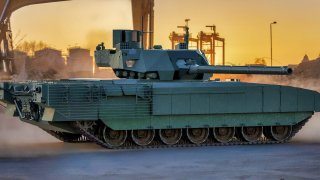The Russian Military Will Be 'Transformed' Due to Ukraine War: Should NATO Worry?
The future composition and capabilities of the Russian military in the aftermath of the Ukraine conflict have become a focal point of strategic discussion among NATO member states
The future composition and capabilities of the Russian military in the aftermath of the Ukraine conflict have become a focal point of strategic discussion among NATO member states. This critical question supports the alliance's force posturing decisions and long-term defense planning. In a recent interview, General Christopher Cavoli, the Supreme Allied Commander in Europe, made a striking assertion: “The Russian military will emerge from the Ukraine war as a stronger force than before the war.”
Earlier this year, General Charles Brown Jr., Chairman of the Joint Chiefs of Staff, made a striking assertion to reporters: Russia has "aggressively reconstituted its military force, leveraging its numerical advantage to wear down Ukraine." While this claim may initially seem far-fetched, given the substantial losses in personnel and equipment sustained by the Russian military, it warrants deeper examination to unpack its implications for NATO.
Several factors contribute to Russia's potential resurgence as a formidable threat to the alliance, perhaps even more significant than before the war. These include Russia's accumulated experiences in modern combat, Its persistent personnel advantage, Deep-seated resentments towards the West and unique threat perceptions, efforts to integrate returning soldiers into leading positions within the government, and ongoing indoctrination through national patriotic youth organizations.
Personnel for Russia
In a significant military expansion, Russian President Vladimir Putin issued a decree in September 2024 to augment the Russian armed forces to 1.5 million personnel, up from 1.013 million before the Ukraine invasion. By year's end, this figure could swell to 2.4 million, including reservists and conscripts. The Kremlin's commitment to this expansion is further evidenced by its substantial financial investment: the Russian government has earmarked a staggering ninety billion rubles, approximately $944.9 million, for recruitment incentives.
This budget allocation could attract between 225,000 and 461,500 recruits, depending on the bonus amounts offered. While the long-term success of these recruitment efforts remains to be seen, Russia's financial commitment signals its intent to maintain strong military expansion even after the war's conclusion. This strategic move suggests a long-term vision for sustained military growth and readiness in the post-war era.
Additionally, the Russian military has restructured its military, even while at war with Ukraine, to face new threats presented by NATO expansion into Finland and Sweden. For example, in response to the enlargement, the Russian military has restructured its military district (MD) design and deactivated the Western Military Districts and the Northern Fleet into the Moscow and Leningrad MD.
Russia plans to create new artillery divisions and heavy artillery brigades, enlarging the Naval infantry and airborne forces, and building new Army corps, divisions, and combined arms armies opposite Finland like the 14th Army Corps and the 44th Army Corps.
Lessons Learned in the Ukraine War
Contrary to popular beliefs amongst Western observers, the Russian military is a thinking, learning, and adapting force. Russia has learned from its mistakes since the beginning of the war and has adjusted its doctrine and tactics to fight on the modern battlefield. Improvements in the Reconnaissance-Strike and Reconnaissance-Fire complex have helped Russian targeting at the line of contact and depth.
Russia has also shifted from the large battalion tactical groups to smaller assault detachments and, while slow, has increased the production and employment of drones and loitering munitions. These adaptations in modern conditions will give Russia experience in modern-day warfare, an experience that no one in the West has.
Conclusion
As NATO contemplates the conclusion of this conflict, several critical lessons emerge. The Russian military will undoubtedly be transformed by battle-hardened veterans returning from Ukraine. These soldiers, shaped by war and influenced by Kremlin-sponsored narratives, may harbor deep-seated resentment and misplaced blame for their wartime experiences.
The Kremlin's efforts to rapidly integrate these individuals into the Russian political apparatus, coupled with increased investments in military personnel, signal a persistent and growing threat to regional stability.
NATO, in response, must remain vigilant and proactive. The alliance's continued investment in its military capabilities is not merely advisable but imperative. The Russian presence on NATO's eastern flank is likely to remain a significant security concern for the foreseeable future, necessitating a robust and adaptable defense strategy. As geopolitical landscapes shift, the lessons from this conflict will play a crucial role in shaping NATO's approach to deterrence and collective defense in the coming decades.
About the Author
Jorge L. Rivero is a retired Marine staff-noncommissioned officer. He is a senior information operations planner and previously served as a Russian foreign area specialist. Jorge holds an MA from the Bundeswehr University in Munich and an MA from George Washington University. He is also an MIT Seminar XXI fellow. His work focuses on Russian information operations, military, and strategic weapons.
Image Credit: Creative Commons.


